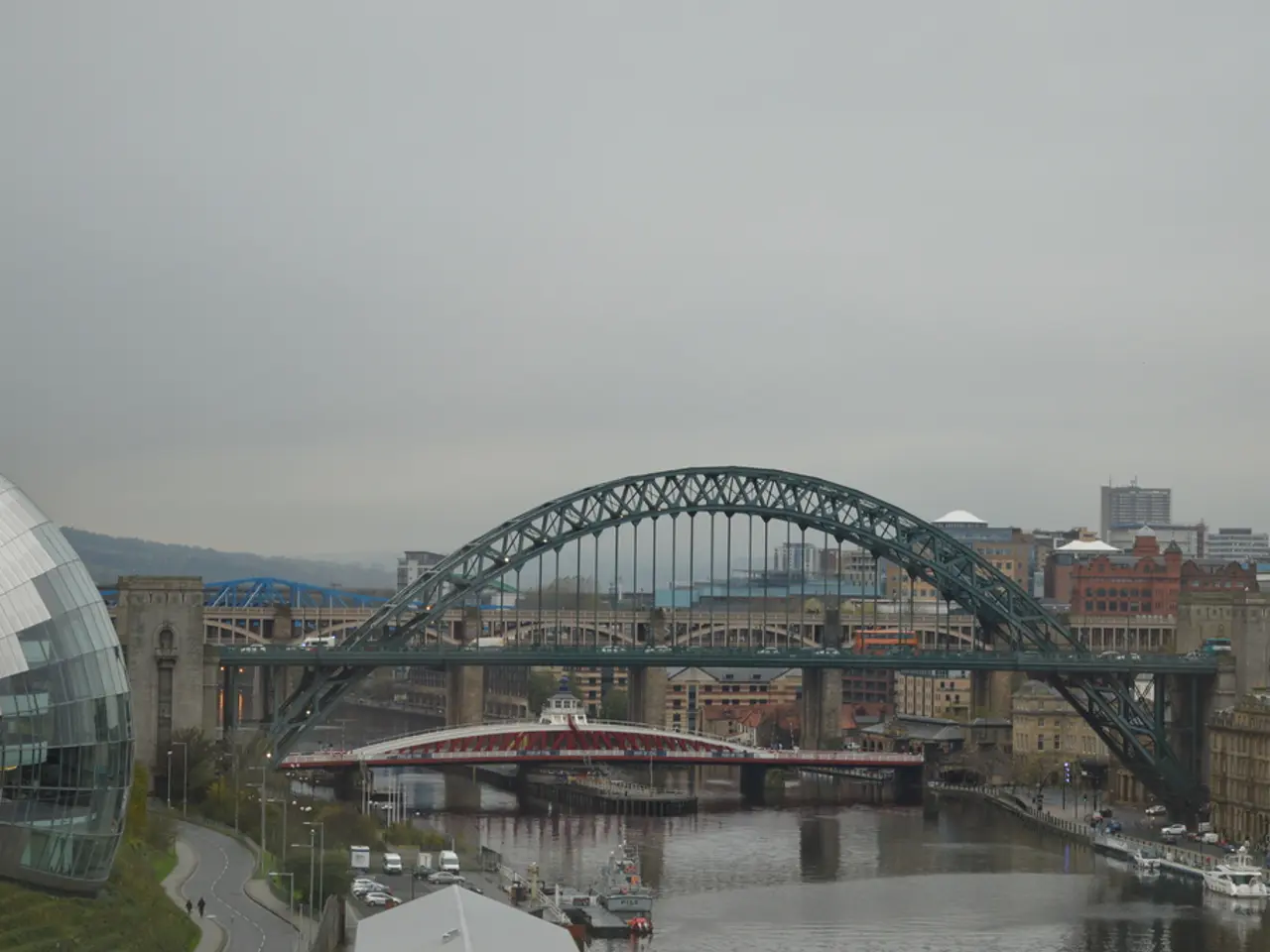Planning Presents a Test for Strategy: Climate Issues
In the heart of India, Hyderabad, the fifth-largest economic hub, experienced a significant setback as heavy rainfall caused widespread waterlogging, disrupting traffic and stranding people for hours. This incident underscores the challenges posed by urban flooding, particularly during monsoons, in Indian cities.
Despite the hurdles, efforts are being made to combat this issue. Current strategies focus on a holistic approach, combining resilient infrastructure development, technology-based early warning systems, better urban planning, and community engagement.
Key solutions and strategies include investing in resilient urban infrastructure, such as improved stormwater drainage, flood-resilient transport, energy-efficient housing, and municipal services designed to withstand extreme weather challenges. A World Bank report recommends a 10-point action plan, including resilient infrastructure and early warning systems, as critical to reduce losses projected to reach $5 billion annually by 2030.
Technology and innovation play a crucial role in this battle. Institutions like IIT Delhi have developed early warning systems that use real-time data to monitor flood risk points across the city. Drones are deployed for waterlogging surveillance and mapping vulnerable areas to support rapid response. These technology initiatives are being piloted in cities like Delhi, Bengaluru, and Kanpur to improve flood prediction and management.
Drainage improvement and maintenance are also essential. Cities such as Gurugram have implemented modular rainwater harvesting in parks to retain excess water and have added sensor-triggered pump backups for underpasses to reduce waterlogging.
Promoting nature-based solutions, such as "sponge cities" that enhance urban areas' capacity to absorb and reuse rainwater via green spaces, wetlands, and permeable surfaces, is another key strategy. This approach counters the loss of natural water bodies due to urbanization.
Strict urban planning and regulatory enforcement are also vital. Controlling unauthorized constructions and protecting natural drainage paths and wetlands is critical to prevent obstruction of water flow. Integrating flood mitigation and climate adaptation measures into city master plans is recommended to guide sustainable urban expansion.
Community awareness and response readiness are equally important. Efforts are being made to improve public understanding of drainage maintenance, waste disposal, and flood preparedness. Coordinated emergency response plans help minimize casualties and property damage during flooding events.
Financial strategies and private sector engagement are also crucial. Mobilizing over $2.4 trillion investment by 2050 in green and resilient urban infrastructure is projected as necessary, with emphasis on private sector involvement to meet funding gaps.
However, the legacy drainage systems in metro cities, designed for historical averages and not for this phenomenon, make flood control difficult. Cloudbursts, involving heavy rainfall of over 100 mm in a short duration, have become increasingly common. By 2030, a study projects that India will see a 43 per cent rise in short and intense bursts of rain.
For people and companies, this requires a 360-degree reassessment of existing routines. Instead of concentrating in one location, companies should spread out their facilities within a city or switch to remote working models in periods of weather crisis. People should live closer to their workplace, adopt carpooling, and choose schools closer to home for their children.
The poor condition of cities during monsoons is not solely due to extreme weather events but also the lack of civic sense. People's indifference towards maintaining public spaces, often littering roads with impunity, clogs drains, leading to waterlogging that affects even those who caused it.
In conclusion, no city can withstand extreme weather events such as these induced by climate change without a drastic realignment of current practices. State and Central governments must reevaluate their urban planning in light of these challenges, while individuals and companies must take responsibility for their impact on the environment and the city's infrastructure.
1) The environmental-science community recognizes technology and innovation as crucial components in the fight against city flooding, with institutions like IIT Delhi developing early warning systems using real-time data for flood risk points.2) Policymakers and legislators are urged to formulate robust policy-and-legislation addressing urban planning and flood management, with a focus on protecting natural drainage paths, enforcing regulations, and integrating climate adaptation measures into city master plans.3) To reduce the economic impact of climate-change-induced flooding, it is essential for both general-news sources and the public to stay informed about the latest scientific findings, technology advancements, and policy developments in the field of environmental-science and urban flood management.






